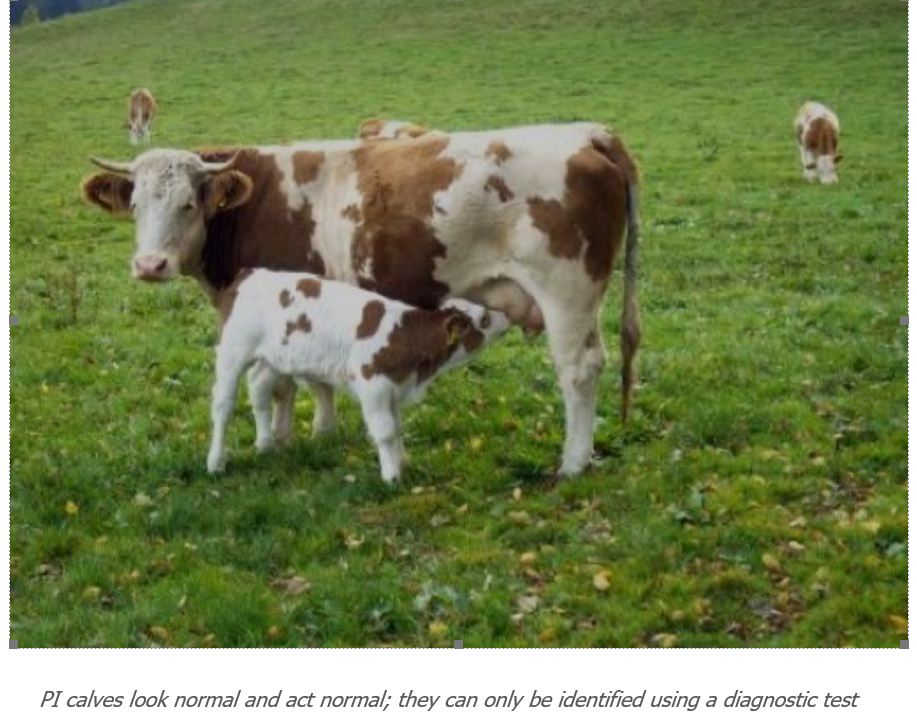



PCR Testing Can Eliminate BVD Persistently Infected Cycle
New research shows PCR’s higher sensitivity can reduce economic impact of false-negative results in infected calves.New research to be presented at the International Symposium of the World Association of Veterinary Laboratory Diagnosticians (WAVLD) June 7-10 in Sorrento, Italy, shows that using the right method for detection of Bovine Viral Diarrhea (BVD) virus in persistently infected (PI) calves plays an important role in eliminating the virus from the herd.
“PI calves look normal and act normal, so the only way to identify if a calf is a PI-BVD virus carrier is to test each calf,” said Gregg Hanzlicek, DVM, Ph.D., at Kansas State Veterinary Diagnostic Laboratory. “Using an ear notch sample, PCR is the best tool to identify PI calves so farmers can remove them from the herd before breeding season starts.”
PI-BVD animals continuously shed the virus and are the main source of BVDV infection in the herd. It is very well documented that if PI-BVD animals aren’t removed quickly from a cow-calf operation and are exposed to pregnant cows, a new crop of PI calves will be born the following year.
“For farmers who calve in the spring, now is the best time to test for PI-BVD calves,” Dr. Hanzlicek said. “It is important to remove them before the bulls are turned or artificial insemination begins. Otherwise, BVDV will continue circulating in the herd.”
Diagnostic Sensitivity and Specificity Impact Farmer Profitability
The study by the Kansas State Diagnostic Laboratory compared the BVD virus sensitivity and specificity performance of three commercial kits: Two antigen detection immunotests from a competitor supplier and the Applied Biosystems VetMAX-Gold BVDV PI Detection PCR Kit from Thermo Fisher Scientific.
The results showed that the diagnostic technologies had different levels of sensitivity and an equal level of specificity compared to results with gold standard methods immunohistochemistry and RNA sequencing. Thermo Fisher’s real-time PCR test was more sensitive than the competitor’s antibody-based methods. Detection of BVDV in newborn calves using antibody-based tests can be difficult as calves can have very high antibody titers to BVDV via ingested colostrum. These maternal antibodies can shield the virus and prevent its detection in this type of test.
The practical implication of using diagnostic technologies with low sensitivity in a low BVD prevalence area is of significant importance and can translate to not detecting some of the PI-BVD animals. Undetected PI-BVD animals are one of the main problems in eradication and control programs because it allows PI-BVD calves to comingle with BVD-negative cattle and perpetuate the infection in the herd.
“Diseases like BVD place a major economic burden on the livestock industry. The results we present at the WAVLD demonstrate Thermo Fisher’s dedication to developing practical, accurate solutions for today’s livestock industry, while innovating for tomorrow’s challenges,” said Martin Guillet, Global Head and General Manager of AgriBusiness at Thermo Fisher.
During the WAVLD conference, Thermo Fisher will host a workshop on June 9th entitled, “Innovating solutions for today and tomorrow”. In addition, a number of oral and scientific posters will be presented including:
- Return on Investment of Diagnostics of Tritrichomonas foetus in Breeding Bulls from the State of Chihuahua
- Development and Validation of Tuberculosis Real-time PCR Kit
- The Effect of Pooling Five or 11 Tracheal/Oropharyngeal (TR/OP) Swabs on the Performance of a USDA Licensed Reverse
- Transcriptase, Real-Time PCR Test for Avian Influenza Virus
- Development and Evaluation of ELISA for the Detection of Bovine Tuberculosis
- Detecting Porcine Coronaviruses - PEDV, PDCoV and TGEV by Real-Time Reverse Transcriptase PCR
For more information about the Applied Biosystems line of diagnostics products, please visit www.thermofisher.com/animalhealth.
TheCattleSite News Desk





